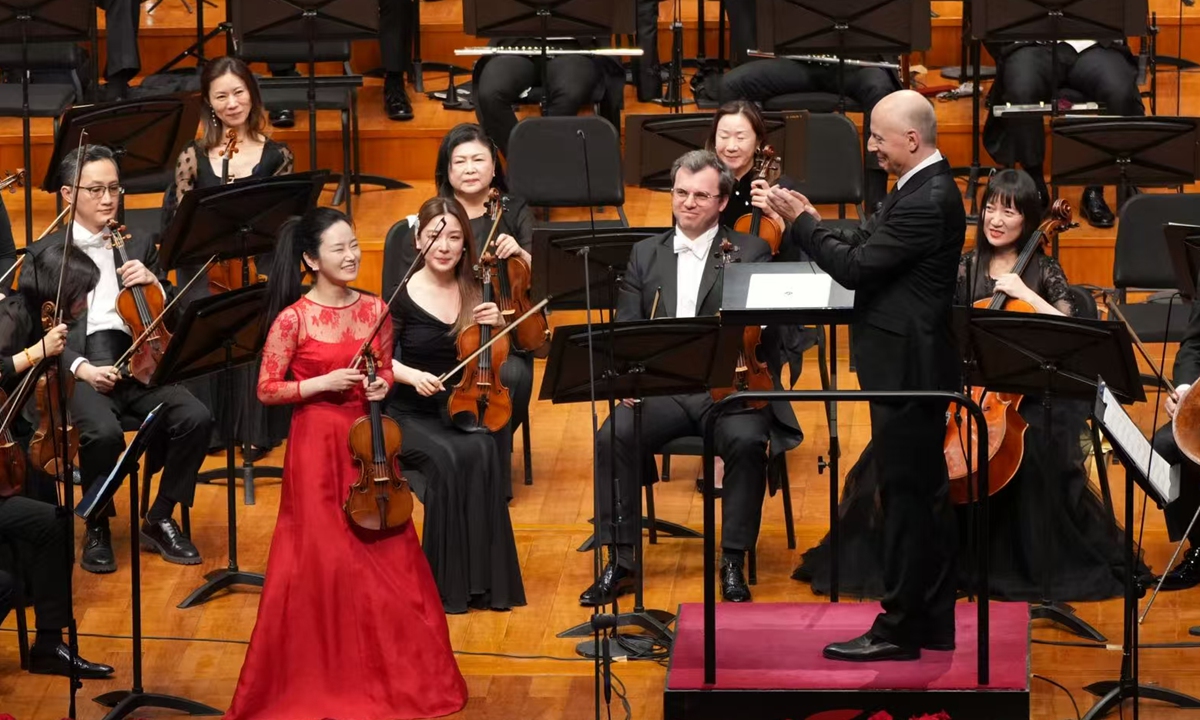
The concert at the National Centre for the Performing Arts Photo: Courtesy of Hong Kong Philharmonic Orchestra
Hong Kong has been promoting its unique role as an East-meets-West center for international cultural exchange with frequent cultural collaboration and exchanges with the mainland, emphasizing its innovative expression of Chinese traditional culture, said Chang Wai-yuen, director of Office of the Government of the Hong Kong Special Administrative Region in Beijing on Monday night.
Chang spotlighted the Hong Kong Philharmonic Orchestra's ongoing mainland tour as an example of cultural exchange. Conducted by Estonian Grammy Award-winning conductor Paavo Järvi, the orchestra presented two concerts at the National Centre for the Performing Arts and Beijing Performing Art Centre on Sunday and Monday, and is now set to hold two masterclasses for young students from the Central Conservatory of Music and the Tianjin Juilliard School on Tuesday.
"Music promotes exchange, serving not only as art but as an educational bridge," Chang said. During its 50th-anniversary tour across seven mainland cities last year, the orchestra had been well-received for its music and exchange. "The Beijing office has plans to expand Hong Kong's artistic outreach to more mainland cities while hosting mainland troupes in Hong Kong," he added.
The SAR government unveiled its Blueprint for Arts and Culture and Creative Industries Development in 2024, which aims to cement Hong Kong's status as an "East-meets-West Cultural Exchange Center."
"Supported by national policies, infrastructure projects like the West Kowloon Cultural District -home to the M+ Museum and Hong Kong Palace Museum - have emerged as global landmarks," he said.
The West Kowloon Cultural District, located on the edge of Victoria Harbour, covers an area of about 40 hectares and is one of the largest cultural projects in the world. In recent years, several world-class art and cultural facilities have opened in the district, including the Xiqu Center, the M+ Museum of visual culture, and the Hong Kong Palace Museum (HKPM), which have greatly strengthened Hong Kong's cultural and artistic image.
These venues blend Forbidden City treasures with international exhibitions, attracting events like Art Basel and "reinforcing Hong Kong's position among the world's top art markets."
Chang acknowledged that Hong Kong has often been considered as a "financial hub" or a center of "pop culture," overshadowing its dedication to preserving traditional arts.
"From Cantonese opera and Chinese orchestras to modern dance and philharmonic performances, Hong Kong has always focused on innovating traditional cultural expressions." He cited the Hong Kong Opera's recent mainland tours, which fused Italian opera with Chinese classics like Jasmine Flower and Cantonese songs like I'm into You.
"Our DNA merges Chinese heritage with global vision - this is our core strength," Chang asserted.




